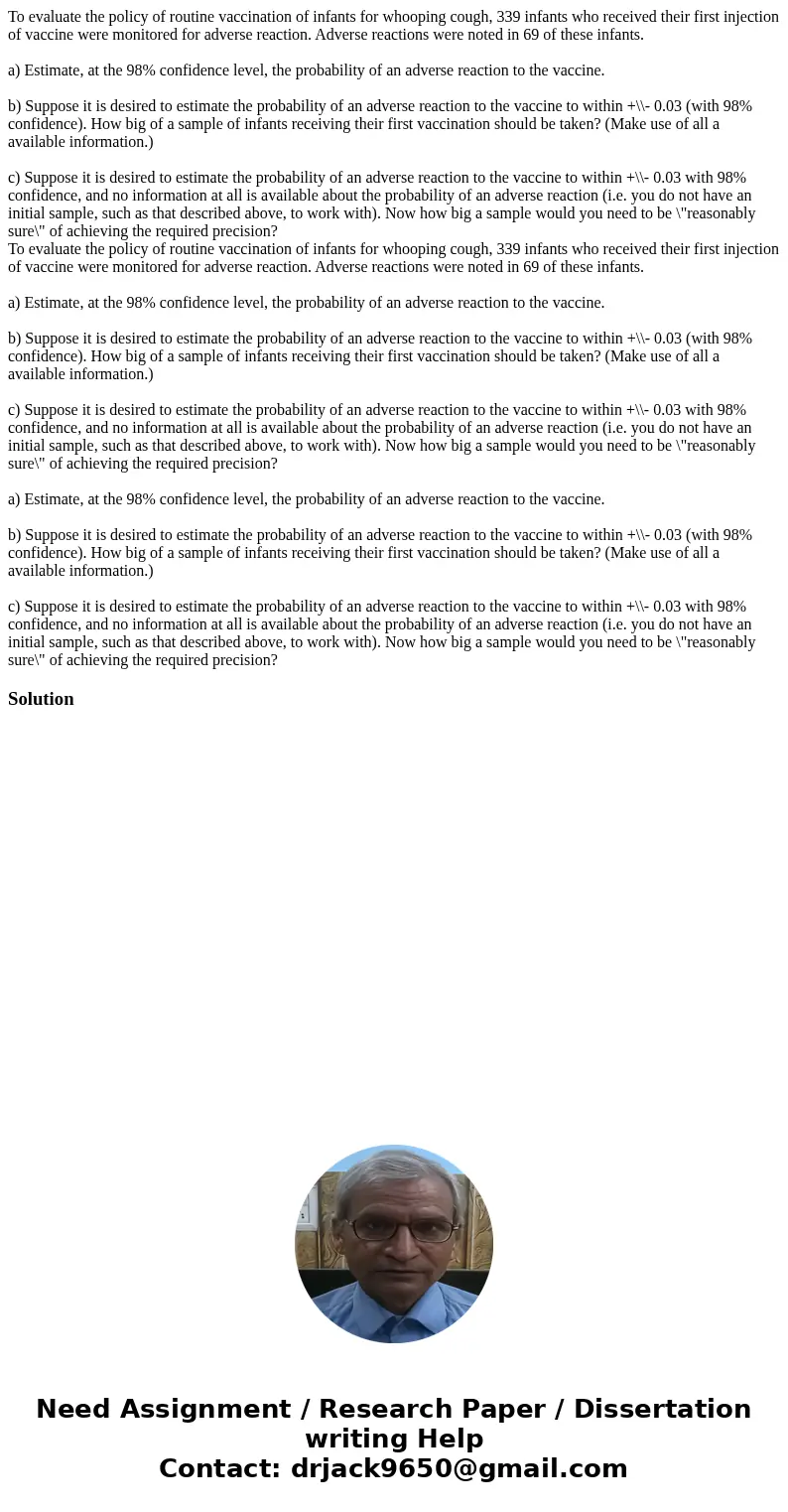To evaluate the policy of routine vaccination of infants for
To evaluate the policy of routine vaccination of infants for whooping cough, 339 infants who received their first injection of vaccine were monitored for adverse reaction. Adverse reactions were noted in 69 of these infants.
a) Estimate, at the 98% confidence level, the probability of an adverse reaction to the vaccine.
b) Suppose it is desired to estimate the probability of an adverse reaction to the vaccine to within +\\- 0.03 (with 98% confidence). How big of a sample of infants receiving their first vaccination should be taken? (Make use of all a available information.)
c) Suppose it is desired to estimate the probability of an adverse reaction to the vaccine to within +\\- 0.03 with 98% confidence, and no information at all is available about the probability of an adverse reaction (i.e. you do not have an initial sample, such as that described above, to work with). Now how big a sample would you need to be \"reasonably sure\" of achieving the required precision?
To evaluate the policy of routine vaccination of infants for whooping cough, 339 infants who received their first injection of vaccine were monitored for adverse reaction. Adverse reactions were noted in 69 of these infants.
a) Estimate, at the 98% confidence level, the probability of an adverse reaction to the vaccine.
b) Suppose it is desired to estimate the probability of an adverse reaction to the vaccine to within +\\- 0.03 (with 98% confidence). How big of a sample of infants receiving their first vaccination should be taken? (Make use of all a available information.)
c) Suppose it is desired to estimate the probability of an adverse reaction to the vaccine to within +\\- 0.03 with 98% confidence, and no information at all is available about the probability of an adverse reaction (i.e. you do not have an initial sample, such as that described above, to work with). Now how big a sample would you need to be \"reasonably sure\" of achieving the required precision?
a) Estimate, at the 98% confidence level, the probability of an adverse reaction to the vaccine.
b) Suppose it is desired to estimate the probability of an adverse reaction to the vaccine to within +\\- 0.03 (with 98% confidence). How big of a sample of infants receiving their first vaccination should be taken? (Make use of all a available information.)
c) Suppose it is desired to estimate the probability of an adverse reaction to the vaccine to within +\\- 0.03 with 98% confidence, and no information at all is available about the probability of an adverse reaction (i.e. you do not have an initial sample, such as that described above, to work with). Now how big a sample would you need to be \"reasonably sure\" of achieving the required precision?
Solution

 Homework Sourse
Homework Sourse